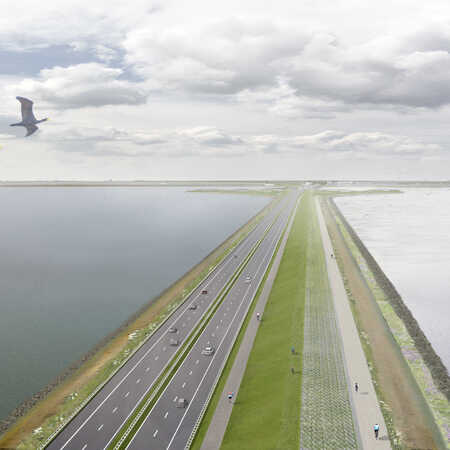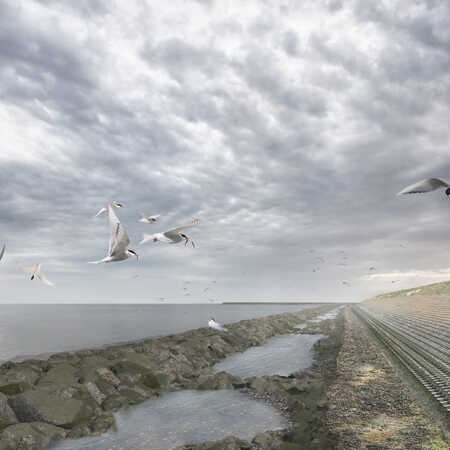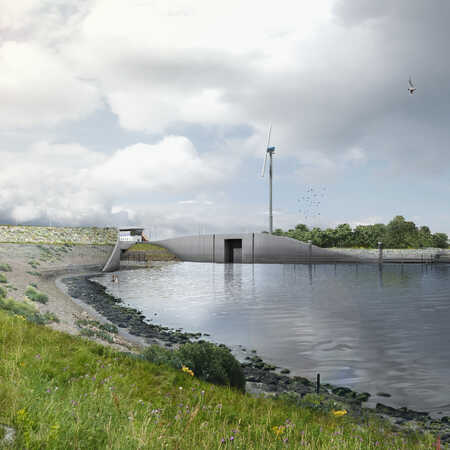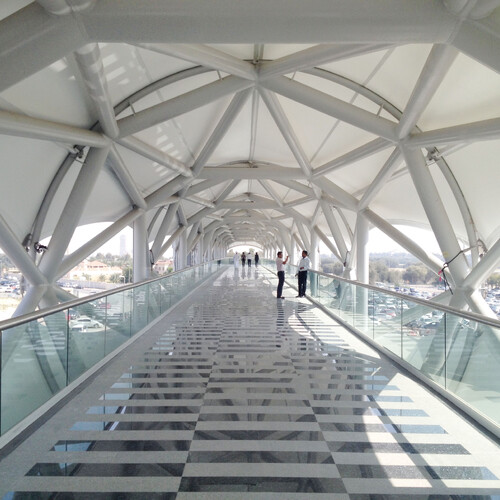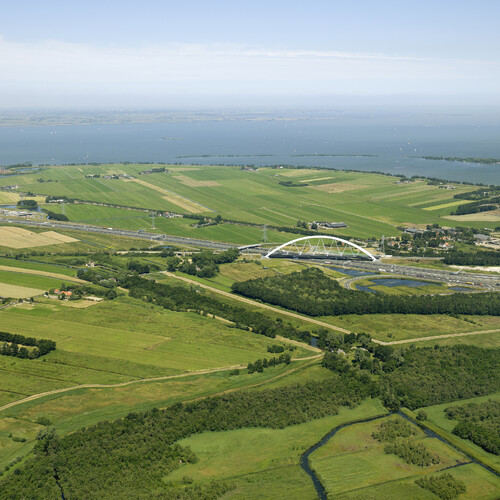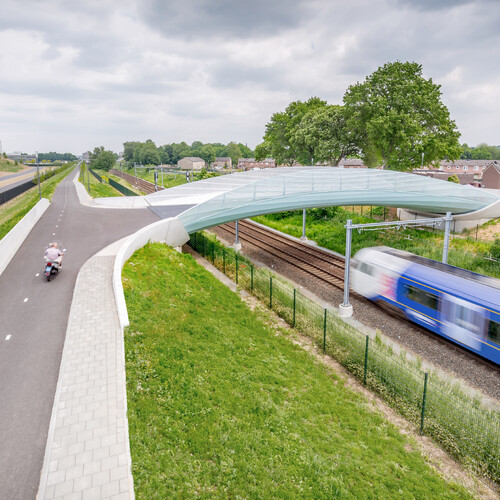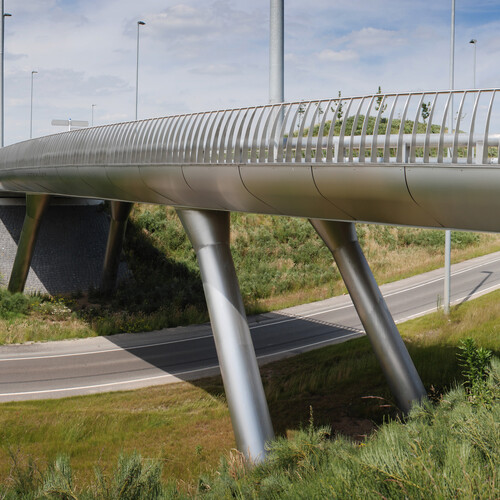A national monument
The Afsluitdijk (a major dyke and causeway in the Netherlands, completed in 1933) is the pinnacle of the world famous Zuiderzee-werken. At its time it was an innovative sea wall, that conformed to the demands that the sea current sets on the placing of locks, that has a curvature that follows the earth’s surface and bricklaying that is attuned to the beating of the waves. For these visionary feats of hydrological engineering alone the Afsluitdijk can be considered a national monument.
The clarity of the design of the lock system at Den Oever and Kornwerderzand, the layout and shape of the embankment all show that the Afsluitdijk has been designed with respect for the landscape.
During the past eighty years new biotopes have come into being up and around the dyke, providing opportunities for plants, insects and birds. It is a characteristically Dutch man-made landscape.
Ready for the future
Climate change causes sea levels to rise and brings fiercer gales and a lot more rain. Even in 2050, the Afsluitdijk has to be able to withstand the greater impact of incoming waves and of the suction of the retreating waves, while retaining its qualities as a monument of cultural and historical heritage.
In collaboration with Royal HaskoningDHV, Vista landscape architects an urbanism and Corneel (a consortium consisting of Volker Wessel and Boskalis, founded at the time of the 2017 tender) the architectural firm ZJA designed a new Afsluitdijk. At the bottom, where the sea touches the dyke at regular tide, a wave breaking threshold is constructed out of deposited rocks. This creates tidal pools right behind the threshold. At places where the sea is shallow salt marshes will give room to feeding birds, algae and other salt loving plants.
A little higher up is the lower part of the dyke’s incline. In collaboration with Royal HaskoningDHV and Corneel, ZJA developed a system of small interlocking concrete columns with a warped shape to replace the blocks of basalt. The network of interlocking little columns absorbs the huge tensile strengths much better than individual columns of concrete. The bigger the suction power of the retreating wave, the tighter the columns are contracted together. Loads are distributed much like a vault - or an arched roof would do.
By covering the embankment with these warped columns, about 20 % of hollow space is created, which provides an extra absorbing function to counter the incoming waves. Thanks to this system the new dyke is much stronger, but with a reduction of 30 % in the use of material. The hollow spaces between the little columns give plants and insects a place to thrive, which in its turn will attract birds. The parties involved obtained a patent for this system in 2020.
The gale embankment and the crest
It was imperative to increase the dyke’s height, but a second invention developed by ZJA, in collaboration with Royal HaskoningDHV, Vista and Corneel, made it possible to reduce this increase to just over a meter. For this system another patent was obtained.
Breaking the waves usually calls for huge concrete blocks or walls, but how to break waves without completely disturbing the dykes silhouette? By slowing the wave down as smart as possible. Every child knows the effect that slowly retreating water has on an incoming wave, smothering it and absorbing its energy. The best wave breaking effect proved to be a structure of concrete rings, as they hold and slow down a lot of water, but only require a modest height. Inside the rings gravel and small rocks provide extra roughness.
But what exactly is the right proportion between measures and height of the structure in relation to the water’s speed? The answer is: you adapt the proportions in the structure of rings to the wave spectrum of the sea at any specific location. The Corneel team succeeded in finding the formula that describes the optimum coarsening for the different sections of the Afsluitdijk. Experiments suggested the ratio between the width and height of the concrete rings. Here too, the insides of the rings, with rocks and gravel are a boost for the biodiversity on and around the dyke.
The architect, the hydrodynamic expert and the engineer
The Corneel consortium that commissioned ZJA, Royal HaskoningDHV and Vista landscape architects and urbanism, to design a new Afsluitdijk did not win the tender, but the entire research with its analyses, enquiries and experiments in hydrodynamic laboratories has resulted in two patents that can be applied in any part of the world. They are the product of a process of trial and error in which aesthetic intuitions and mathematical insights gradually merged. The solution was not just a technological fix, but also provided the right balance between safety, landscape, nature and cultural value.
Architect: ZJA
Principal: Rijkswaterstaat
Client: Corneel (VolkerWessels en Boskalis)
Landscape architect: Vista Landschapsarchitectuur en Stedenbouw
Engineering firm: Royal HaskoningDVH
Tender: 2017
Project: #859


